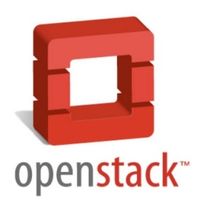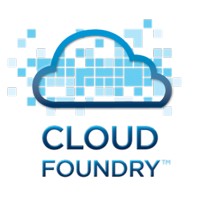 One thing that's obvious about 2011 is that the excitement on my beat has shifted, from open source as a business model to the cloud.
One thing that's obvious about 2011 is that the excitement on my beat has shifted, from open source as a business model to the cloud.
A lot of people don't understand the cloud. I admit that it took me some time. The basic idea is that you tie a bunch of servers together under a single software structure, then use virtualization to run anything a customer wants.
This lets your server room scale. It means that when people "rush to the rail" for a particular site you can serve them all. It means when you want to harness the work of hundreds of servers for a short time to solve a big problem you can.
Clouds save Web hosts money, because they can spend for a single peak load, rather than making each machine serve as peak load for a single site or customer. Clouds save people and companies money, too, because they don't have to pay for all that stuff they're not using. Clouds made Facebook possible, because they could host a fast-growing service built by a small team.
Amazon EC2 is the best-known commercial cloud. This provides basic infrastructure. You have to build both your application and its platform on top of EC2. So Amazon EC2 is said to be selling Infrastructure As A Service (IAAS).
A lot of Web hosts want to compete with this by having complete platforms. The biggest of these is Microsoft. Microsoft doesn't just offer infrastructure on its Azure cloud. Azure is a complete platform for hosting applications. Thus this is called Platform As A Service (PAAS).
Follow me so far? When you are in the business of selling software, like Salesforce.com, and you move all that to a cloud, so people are just buying the service Salesforce.com supplies, this is called Software As A Service (SAAS).
So, IAAS, PAAS, SAAS. They're all built on top of one another. The infrastructure, the platform, and the software are all "layers" of cloud services.
With me so far? OK, let's see how open source fits into this.

OpenStack,sponsored by Rackspace, a San Antonio-based Web hosting company, is basically trying to build an open source alternative to EC2. This will let any Web host (and it's Web hosting companies who are its primary allies) become a cloud player. It will also let corporations build their own clouds with open source. The result of installing OpenStack will be to give you IAAS.
VMWare's Cloud Foundry is, as many journalists are writing now, open source PAAS. That is, it's a complete cloud platform. It supports a host of production tools — languages like Ruby and databsaes like mySQL. VMWare will offer its own cloud as infrastructure, but you can build Cloud Foundry on top of other infrastructure. Since the whole thing is open source, you can build it on OpenStack, and now you have not only a working cloud but the tools needed to turn that cloud into something useful.

At the end of the day all this is about saving money. Enterprises can save money by evolving their current server farms into clouds, which make more efficient use of the resource. Web hosts can stay in the game by evolving their services into clouds. Open source software companies can get a working SAAS business model by having their software hosted on clouds. Any kid with a Clue can become a billionaire by having a small team use open source tools to create a customer-facing cloud application.
Got that last sentence? After reading the rest of this post you should. That's all Facebook and Twitter and Groupon and the rest have done. That's their secret sauce.
And now that you have it, go out into the marketplace and eat their lunch.










More importantly, any “not a kid any more” with a clue can also become a billionaire by having a small team use open source tools to create a customer-facing cloud application. Working on it 😉
More importantly, any “not a kid any more” with a clue can also become a billionaire by having a small team use open source tools to create a customer-facing cloud application. Working on it 😉
It’s not necessary to be “a kid” to be a kid in the business sense. Bill Gates was. Steve Jobs was. Mark Zuckerberg was.
I think the key is a relentless focus on one key thing. The operating system, in Gates’ case. The user interface, in Jobs’. Relationships, in Zuckerberg’s.
You don’t have to be 20 to do that. Harland Sanders was older than I am when he started Kentucky Fried Chicken, because the Interstate bypassed his restaurant and he was being driven out of business. But he was, in a way, a “kid.” And he did have a Clue.
It’s not necessary to be “a kid” to be a kid in the business sense. Bill Gates was. Steve Jobs was. Mark Zuckerberg was.
I think the key is a relentless focus on one key thing. The operating system, in Gates’ case. The user interface, in Jobs’. Relationships, in Zuckerberg’s.
You don’t have to be 20 to do that. Harland Sanders was older than I am when he started Kentucky Fried Chicken, because the Interstate bypassed his restaurant and he was being driven out of business. But he was, in a way, a “kid.” And he did have a Clue.
Wouldn’t you say that AWS is built on OSS too? By default you would instantiate Linux Boxes running an OSS stack. With Elastic Beanstalk you drop a jar into a managed Tomcat Platform (so they are moving into the PAAS space.)
They provide closed source alternatives too but I’m not sure of the distinction.
You are spot on that the cloud breaks down the barriers to entry – which is huge for the kids and the not-kids-anymore. There is a lot of lunch to be eaten from those that ignore the new reality of IAAS, PAAS, and SAAS.
Wouldn’t you say that AWS is built on OSS too? By default you would instantiate Linux Boxes running an OSS stack. With Elastic Beanstalk you drop a jar into a managed Tomcat Platform (so they are moving into the PAAS space.)
They provide closed source alternatives too but I’m not sure of the distinction.
You are spot on that the cloud breaks down the barriers to entry – which is huge for the kids and the not-kids-anymore. There is a lot of lunch to be eaten from those that ignore the new reality of IAAS, PAAS, and SAAS.